Related Research Articles

Lycia was a geopolitical region in Anatolia in what are now the provinces of Antalya and Muğla on the southern coast of Turkey, bordering the Mediterranean Sea, and Burdur Province inland. Known to history since the records of ancient Egypt and the Hittite Empire in the Late Bronze Age, it was populated by speakers of the Luwian language group. Written records began to be inscribed in stone in the Lycian language after Lycia's involuntary incorporation into the Achaemenid Empire in the Iron Age. At that time (546 BC) the Luwian speakers were decimated, and Lycia received an influx of Persian speakers. Ancient sources seem to indicate that an older name of the region was Alope.
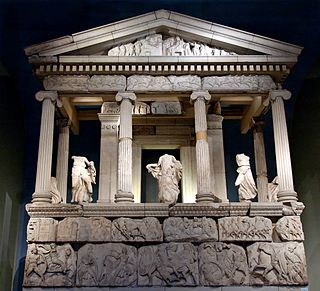
Xanthos was a city in ancient Lycia, the site of present-day Kınık, Antalya Province, Turkey, and of the river on which the city is situated. The ruins of Xanthus are on the south slopes of a hill, the ancient acropolis, located on the northern outskirts of the modern city, on the left bank of the Xanthus, which flows beneath the hill. A single road, Xantos yolu, encircles the hill and runs through the ruins. Xanthos is a designated UNESCO World Heritage Site together with Letoon, the centre of the Lycian civilization, exerted significant architectural influences upon other cities of the region, with the Nereid Monument directly inspiring the Mausoleum at Halicarnassus in Caria.

The Lycian language was the language of the ancient Lycians who occupied the Anatolian region known during the Iron Age as Lycia. Most texts date back to the fifth and fourth century BC. Two languages are known as Lycian: regular Lycian or Lycian A, and Lycian B or Milyan. Lycian became extinct around the beginning of the first century BC, replaced by the Ancient Greek language during the Hellenization of Anatolia. Lycian had its own alphabet, which was closely related to the Greek alphabet but included at least one character borrowed from Carian as well as characters proper to the language. The words were often separated by two points.
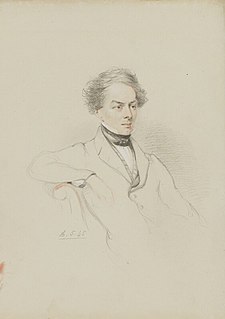
Sir Charles Fellows was a British archaeologist and explorer, known for his numerous expeditions in what is present-day Turkey.
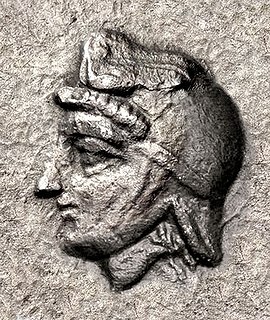
Autophradates was a Persian Satrap of Lydia, who also distinguished himself as a general in the reign of Artaxerxes III and Darius III.
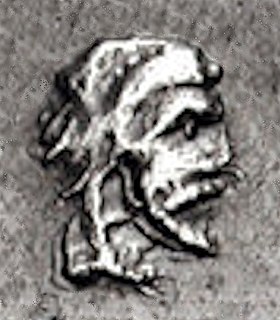
Pixodarus or Pixodaros, was a satrap of Caria, nominally the Achaemenid Empire Satrap, who enjoyed the status of king or dynast by virtue of the powerful position his predecessors of the House of Hecatomnus created when they succeeded the assassinated Persian Satrap Tissaphernes in the Carian satrapy. Lycia was also ruled by the Carian dynasts since the time of Mausolus, and the name of Pixodarus as ruler appears in the Xanthos trilingual inscription in Lycia.
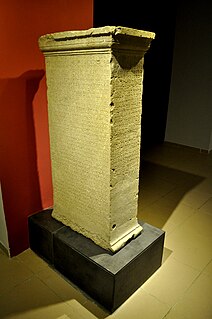
The Letoon trilingual, or Xanthos trilingual, is an inscription in three languages: standard Lycian or Lycian A, Greek, and Aramaic covering the faces of a four-sided stone stele called the Letoon Trilingual Stele, discovered in 1973 during the archeological exploration of the Letoon temple complex, near Xanthos, ancient Lycia, in present-day Turkey. It was created when Lycia was under the sway of the Persian Achaemenid Empire. The inscription is a public record of a decree authorizing the establishment of a cult, with references to the deities, and provisions for officers in the new cult. The Lycian requires 41 lines; the Greek, 35 and the Aramaic, 27. They are not word-for-word translations, but each contains some information not present in the others. The Aramaic is somewhat condensed.
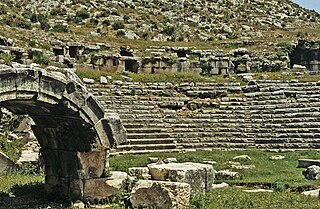
Limyra (Lycian: 𐊈𐊚𐊎𐊒𐊕𐊁 was a small city in ancient Lycia on the southern coast of Asia Minor, on the Limyrus River. Already flourishing in the second millennium BCE, the city was one of the oldest and most prosperous in Lycia; it gradually became one of the finest trade settlements in Greece.
Kandyba or Candyba was a settlement in ancient Lycia, in modern-day Antalya province on the southwestern Mediterranean coast of Turkey.

The Nereid Monument is a sculptured tomb from Xanthos in Lycia, close to present-day Fethiye in Mugla Province, Turkey. It took the form of a Greek temple on top of a base decorated with sculpted friezes, and is thought to have been built in the early fourth century BC as a tomb for Arbinas, the Xanthian dynast who ruled western Lycia under the Achaemenid Empire.

The Tomb of Payava is a Lycian tall rectangular free-standing barrel-vaulted stone sarcophagus, and one of the most famous tombs of Xanthos. It was built in the Achaemenid Persian Empire, for Payava, who was probably the ruler of Xanthos, Lycia at the time, in around 360 BC. The tomb was discovered in 1838 and brought to England in 1844 by the explorer Sir Charles Fellows. He described it as a 'Gothic-formed Horse Tomb'. According to Melanie Michailidis, though bearing a "Greek appearance", the Tomb of Payava, the Harpy Tomb and the Nereid Monument were built according to the main Zoroastrian criteria "by being composed of thick stone, raised on plinths off the ground, and having single windowless chambers".
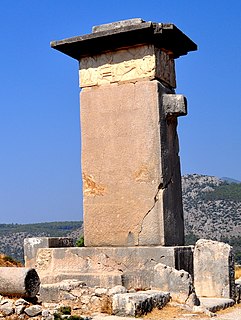
The Harpy Tomb is a marble chamber from a pillar tomb that stands in the abandoned city of Xanthos, capital of ancient Lycia, a region of southwestern Anatolia in what is now Turkey. Built in the Persian Achaemenid Empire, and dating to approximately 480–470 BC, the chamber topped a tall pillar and was decorated with marble panels carved in bas-relief. The tomb was built for an Iranian prince or governor of Xanthus, perhaps Kybernis.

The Xanthian Obelisk, also known as the Xanthos or Xanthus Stele, the Xanthos or Xanthus Bilingual, the Inscribed Pillar of Xanthos or Xanthus, the Harpagus Stele, the Pillar of Kherei and the Columna Xanthiaca, is a stele bearing an inscription currently believed to be trilingual, found on the acropolis of the ancient Lycian city of Xanthos, or Xanthus, near the modern town of Kınık in southern Turkey. It was created when Lycia was part of the Persian Achaemenid Empire, and dates in all likelihood to ca. 400 BC. The pillar is seemingly a funerary marker of a dynastic satrap of Achaemenid Lycia. The dynast in question is mentioned of the stele, but his name had been mostly defaced in the several places where he is mentioned: he could be Kherei (Xerei) or more probably his predecessor Kheriga.
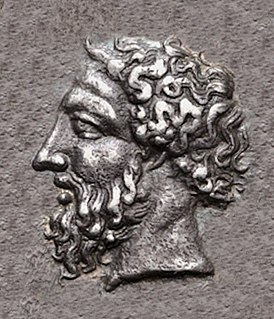
Mithrapāta was dynast of Lycia in the early 4th century BC, at a time when this part of Anatolia was subject to the Persian, or Achaemenid, Empire.
Dias was a city of ancient Lycia mentioned by Stephanus of Byzantium. It has been suggested, with some uncertainty, that a coin minted at Dias is in the collection of the British Museum.
Acalissus or Akalissos was a town of ancient Lycia, an early bishopric, and remains a titular see of the Roman Catholic Church. Coins were minted at Acalissus, some of which are housed at numismatic collections.

Xanthos, also called Xanthus, was a chief city state of the Lycians, an indigenous people of southwestern Anatolia. Many of the tombs at Xanthos are pillar tombs, formed of a stone burial chamber on top of a large stone pillar. The body would be placed in the top of the stone structure, elevating it above the landscape. The tombs are for men who ruled in a Lycian dynasty from the mid-6th century to the mid-4th century BCE and help to show the continuity of their power in the region. Not only do the tombs serve as a form of monumentalization to preserve the memory of the rulers, but they also reveal the adoption of Greek style of decoration.

Arbinas, also Erbinas, Erbbina, was a Lycian Dynast who ruled circa 430/20-400 BCE. He is most famous for his tomb, the Nereid Monument, now on display in the British Museum. Coinage seems to indicate that he ruled in the western part of Lycia, around Telmessos, while his tomb was established in Xanthos. He was a subject of the Achaemenid Empire.

Kybernis or Kubernis, also abbreviated KUB on his coins in Lycian, called Cyberniscus son of Sicas by Herodotus, was a dynast of Lycia, at the beginning of the time it was under the domination of the Achaemenid Empire. He is best known through his tomb, the Harpy Tomb, the decorative remains of which are now in the British Museum. According to Melanie Michailidis, though bearing a "Greek appearance", the Harpy Tomb, the Nereid Monument and the Tomb of Payava were built according main Zoroastrian criteria "by being composed of thick stone, raised on plinths off the ground, and having single windowless chambers".
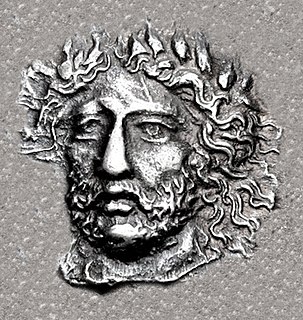
Perikles, was the last known dynast of Lycia. He ruled c. 380–360 BCE over eastern Lycia from Limyra, at a time when Western Lycia was directly under Persian domination.
References
- ↑ Plin. v. 28.
- ↑ Trevor Bryce, Jan Zahle. The Lycians: The Lycians in literary and epigraphic sources. p. 229. Retrieved December 10, 2014.
- ↑ Sir George Francis Hill (1897). Catalogue of the Greek Coins of Lycia, Pamphylia, and Pisidia. A Catalogue of the Greek Coins in the British Museum. The Trustees. p. lvii. Retrieved December 10, 2014.
- ↑ Thomas Abel B. Spratt, Edward Forbes (1847). Travels in Lycia, Milyas, and the Cibyratis. pp. 282-283. Retrieved December 10, 2014.